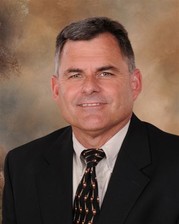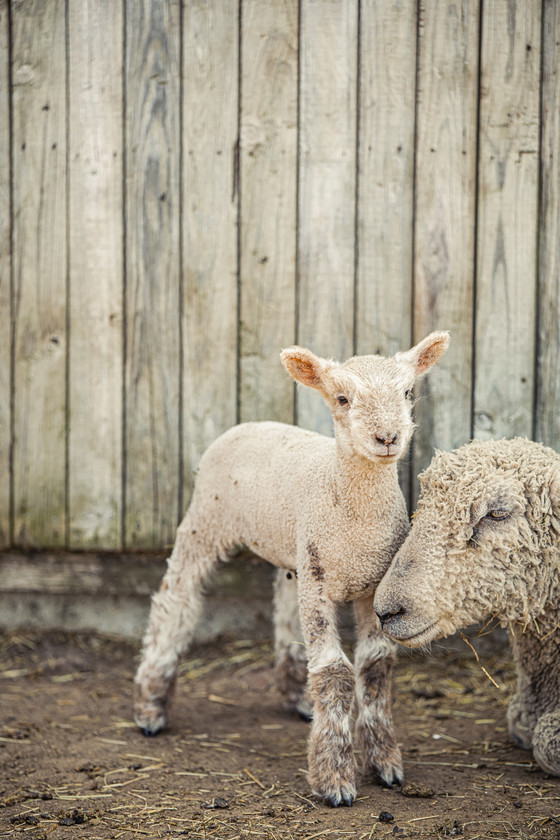

With the recent Environmental Quality Incentives Program (EQIP) deadline, NRCS staff members have been busy working on ranking eligible contracts across the state. We received more than 3,000 applications for the current fiscal year.
As conservation planning is the top priority with our staff members, we are beginning to gradually open our doors to the public by appointment only. This allows more opportunities for staff members to talk in-depth with producers in person and over the phone.
This month we are excited to announce that the Oklahoma Poultry Project is a recipient of the Regional Conservation Partnership Program (RCPP) award. The project will focus in poultry growing areas of eastern Oklahoma and will primarily work directly between poultry growers and their immediate neighbors. On a larger scale, it will protect natural resources in while also supporting the important regional poultry industry.
At the NRCS National Leadership virtual meeting a few weeks ago NRCS was recognized by top leadership at the USDA as the “can-do agency.” We are very proud of our staff members who are always eager to work and assist producers' with their conservation needs. With new and upcoming issues on urban agriculture and climate smart agriculture, rest assured our staff members will be trained and ready to assist all Oklahoma producers.
Gary O'Neill, State Conservationist
|
 Clint and Jessica Wilcox and their daughter Tréleigh.
Conservationist of the Year—this award recognizes a cooperating agriculture producer(s) who has excelled in the application of conservation practices and demonstrates a genuine concern for the care and protection of natural resources in Oklahoma.
Clint Wilcox is an innovator and applies progressive, evolving conservation techniques on his farm in Major County, leading other producers along the way. Clint has applied numerous soil health techniques on his farm through improved residue management, utilizing cover crops, applying an evolving crop rotation, increasing diversity in rotations and cropping systems. Double cropping has lead to as much living root in the soil as possible.
Clint applies a conservation system that utilizes among other practices, 329 Residue Management – No-Till, 328 Crop Rotation, 340 Cover Crop, 590 Nutrient Management utilizing precision agriculture techniques such as grid sampling and sensor based Nitrogen applications that utilize Greenseeker technology. The results are measurable, as just this year Clint was discussing how his soil on one quarter section averaged over two percent organic matter, which he has built through his management of the land. Clint has also utilized 338 Prescribed Burning along with 394 Firebreak to manage the grazing land he operates.
Clint has graciously allowed NRCS to use his fields in demonstrations, whether at a producer field day where there are 75 in attendance, an NRCS training with a small group of 15-20, or a one-on-one visit with someone in his field. We use his fields for comparisons often with new employees.
 Spring has finally arrived and many gardens, lawns and pastures will have nutrients applied through fertilization. Knowing how much of each nutrient is needed is important to optimize plant growth and to do it in an economical way. With that in mind, it is important to obtain a good, representative soil sample for the site you are sampling. Click here to see the fact sheet provided by the OSU Extension Service on how to get a good soil sample.
 A watering facility stores or provides drinking water to livestock or wildlife. This practice is used to accomplish one or more of the following purposes: supply daily water requirements, improve animal distribution, and provide a water source that is an alternative to a sensitive resource. To learn more about this conservation practice, click here.
 Many producers have probably considered switching to a no-till production system at one time or another, but have felt anxiety about switching from their conventional tillage practices. It’s natural for anyone who has farmed for any length of time to feel anxious about trying a new system. For a producer to establish and learn a new system, it may
seem daunting, but it can be done with careful planning and surrounding yourself with knowledgeable people. Click here to find out the benefits of no-till and some general suggestions if considering a switch to no-till.
The best way to stay updated on job postings is to check USA Jobs often and sign up for notifications for job announcements.
Direct Hire – anticipated to be announced in the next few weeks:
- GS-0810/0890-5/7/9 - Ag/Civil Engineer
- State Office - Stillwater, OK
- Perry, OK
- Woodward, OK
- GS-0401-5/7/9 – Natural Resource Specialist/Biologist
- State Office - Stillwater, OK
- Clinton TSO
- GS-0457-5/7/9 Soil Conservationist
- GS-0470-5/7/9 Soil Scientist
All jobs with NRCS are listed on USA Jobs.
 Photo by Macee Hammack. To enter a photo in this month's contest, email the full resolution photo to NRCSinfo-OK@usda.gov by May 20.
This planting season, let Farmers.gov showcase your work by participating in the #Plant2021 campaign. We’ll share your story on @FarmersGov on social media and a nationwide storymap. Here’s how:
Using your smartphone or digital camera, take photos of what’s happening on your operation during planting season. Videos may be too large to email as attachment, so you can email them to us via mail drop (iPhone), Google Photos (Android), or any other file sharing service. A few ideas:
- If you're comfortable, we’d love to see the people that make it happen set against the backdrop of your agricultural operation.
- Take a photo from inside the tractor cab so we can see what you see.
- Photos at sunrise or sunset are always beautiful!
- Behind-the-scenes photos showing us the amount of planning and preparation it takes to have a successful planting season are welcomed.
- Emerging (baby) crops.
Submit your photos/videos along with the following information to us at SM.FP.Social@usda.gov:
- Your name if you’re comfortable sharing.
- Location of the operation (city or county and state).
- Information about what’s in the photo/video and what’s being planting.
- Your thoughts about this year’s planting season. Is this year different from previous years? How do you feel about the season? What are you hopeful about?
- If your operation has a Facebook, Twitter, and/or Instagram account, please include it so that we can tag you.
Please note that by submitting your photo/video, you are granting USDA permission to use these materials for outreach and education purposes.
Follow @FarmersGov on Facebook, Twitter, and Instagram, and we look forward to sharing your story!
-
Langston University Goat and Hair Sheep Field Day - May 1, 8, 14 & 22
- Conservation Webinar - May 4, 10 a.m., May 4, 1 p.m. & May 13, 1 p.m.
- Beginning and Farmers and Ranchers listening session - May 6, 1:30 p.m.
- Sustainable Gardening School - May 8, 2021
-
Mike Thralls Memorial Scholarship - May 15, 2021
- Protected Agriculture Virtual Conference – May 19, 2021
-
Small Farms Spring Conference – May 25 & 26, 2021
-
OK Soil and Water Conservation Society Scholarship - May 28, 2021
|